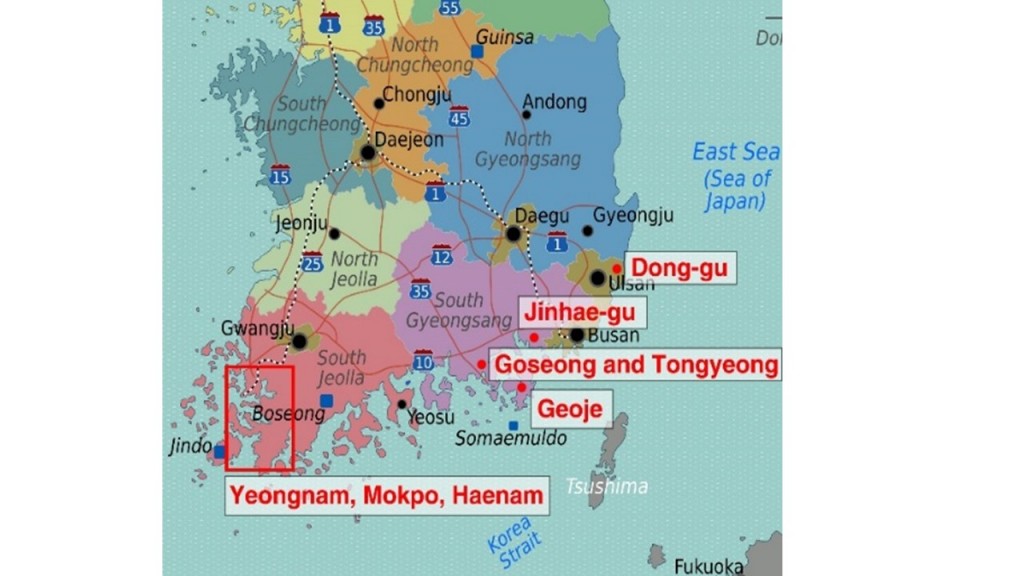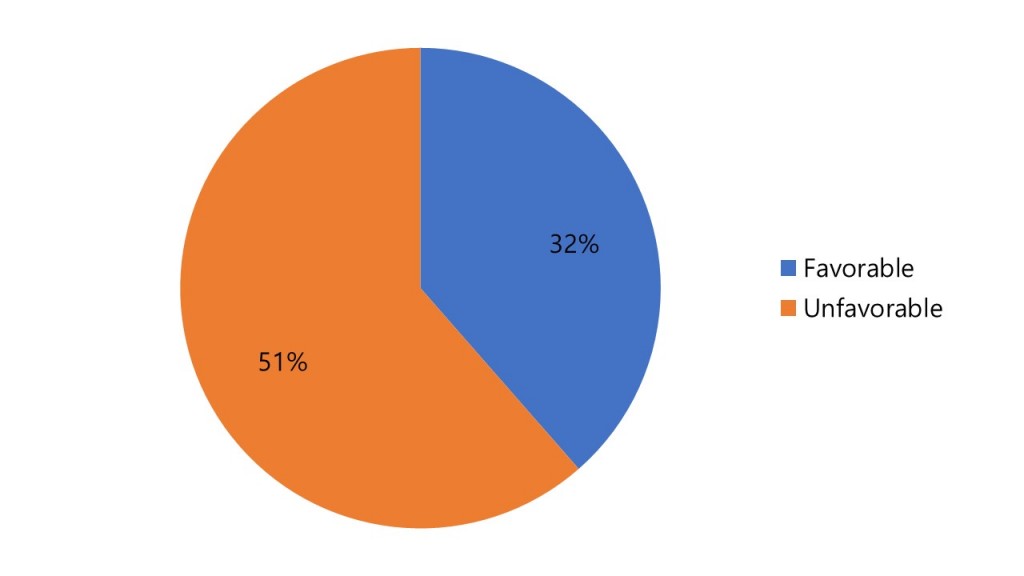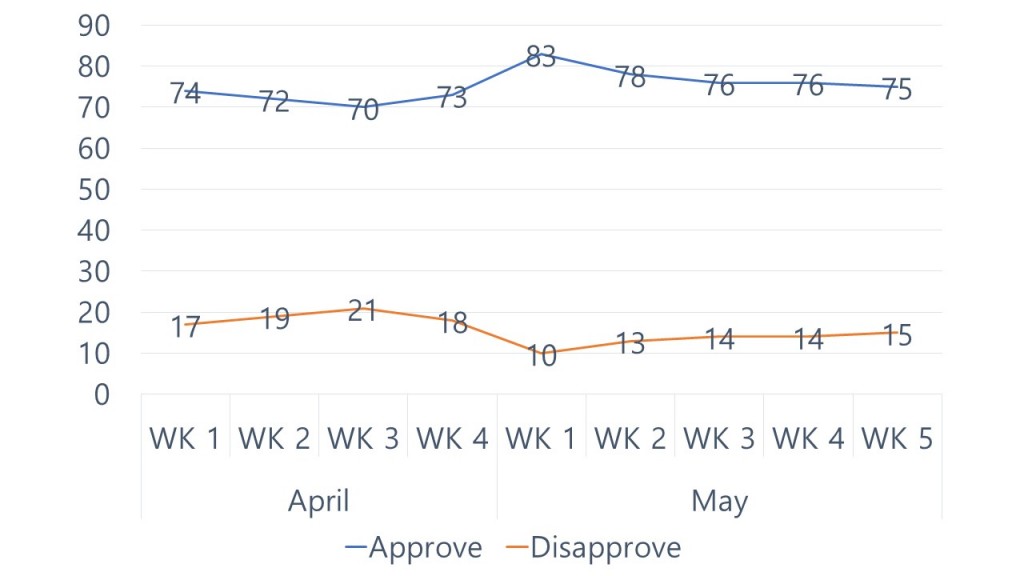The US-ROK Summit
South Korean President Moon Jae-in met US President Donald Trump in Washington, DC on May 22.[1] The two leaders discussed North Korea’s denuclearization. While President Trump acknowledged the difficulty of all-in-one denuclearization, he mentioned the possibility of canceling the meeting with Kim Jong-un if certain conditions are not met.[2] President Moon reiterated North Korea’s willingness to hold the US-DPRK summit and also suggested a possible US-ROK-DPRK trilateral.[3]
The meeting between the two leaders lasted only 21 minutes but the Q&A lasted about 34 minutes. Some observers claimed that President Trump purposefully did this to send a message to China and North Korea.
The US-DPRK Summit?
Amid speculations that the US-DPRK summit meeting may be called off, President Trump abruptly pulled out of the meeting on May 24, citing Kim Jong Un’s angry and hostile statements as his reason for canceling the meeting.[4] It was an embarrassing moment for President Moon whose success of the North Korean policy depended on the US-DPRK summit. The Blue House was not informed of this decision prior to President Trump’s announcement.[5] President Moon expressed regret and emphasized the importance of holding the meeting.[6] Kim Jong-un calmly responded by expressing his desire to hold the meeting if Trump changes his mind.[7]
The Second Inter-Korean Summit
The two Koreas held a second inter-Korean summit on May 26, following President Trump’s announcement to pull out of the June summit.[8] The meeting was held on short notice with the expressed intent to bring the US-DPRK summit back on track.
Some experts stated that the meeting lacked substance while others claimed that the meeting was crucial. For some, President Moon looked like he was back in the ‘driver’s seat’. Others pointed out that no progress was made on the issue of denuclearization.[9]
The opinion also remained divided along political lines. The left-leaning Together Democratic Party (TDP) and Justice Party welcomed the inter-Korean summit, while the right-leaning Liberty Korea Party (LKP) and Bareun-mirae Party were skeptical of President Moon’s position on denuclearization.[10]
On May 27, President Trump announced that he will press ahead with the talks in June as previously scheduled.[11] To lay the initial groundwork, a series of high-level meetings were held in Panmunjom and New York. Sung Kim, the US Ambassador to the Philippines met North Korea’s foreign ministry official Choi Sun Hee on May 27 and May 30, while the US Secretary of State Mike Pompeo met Kim Yong Chol on June 1.
Resumption of High-Level Inter-Korean Meeting
On June 1, the two Koreas resumed high-level talks in the Panmunjom Peace House. The two sides discussed the implementation of the Panmunjom Declaration.[12] The two sides issued a joint statement following the meeting.[13]
Monetary Policy
The Bank of Korea (BOK) Monetary Policy Board met on May 24 and decided to keep the base rate at 1.5%. The BOK stated that the 0.25p increase at the end of last year was proving to be effective.[14] Fears about a possible rise in price as well as weak employment appeared to have played some role in the BOK’s decision.[15]
Figure 1. Base Rate, CPI and Brent, 2012-2018 (March)
Source: Statistics Korea
Fiscal Policy
The National Assembly passed the much disputed and delayed supplementary budget on May 21. While spending related to boosting youth employment was lower than expected, public investment in social overhead capital (SOC) was sizable. The decision allocates more financial resources to provincial SMEs in industrial clusters that have been struggling to attract young talent. This move has been criticized as being motivated by political concerns due to the upcoming provincial elections in June.[16]
The supplementary budget has been set at KRW 3.83trn (USD 3.57bn), which is KRW 21.9bn (USD 20.39mn) less than the proposed amount. Part of the reason for the modest budget increase was lower than expected spending. The government appears to have significantly lowered spending on youth employment. Instead, the items that received increased budget allocation were largely focused on air purification and highway construction.[17]
Figure 2. Supplementary Budget in KRW Trillions
Source: Statistics Korea
On May 31, the Ministry of Strategy and Finance (MoSF) held its National Finance Strategy Meeting where President Moon Jae-in called for a more active role of public finance.[18] Expanding government expenditure requires increased tax revenue, but increasing tax was not mentioned during the meeting. Instead, the government stated that the tax system needed reform for greater efficiency. Kim Dong-yeon, who heads the MoSF, stated that by 2020 current marginal increases in tax revenue will begin to slow down. President Moon called for continued efforts to drive up employment of younger and older workers, but some argue that the interventionist fiscal policy may not be the answer.[19]
Amendments to the Minimum Wage Law
On May 25, the National Assembly passed the proposed amendments to the controversial minimum wage law that have been viewed as passing excessive cost burdens onto firms, especially SMEs. The amendment stipulates that firms without labor unions should not discount benefits (such as the bonus) from the minimum wage. Those firms with labor unions must strike a bargain on what can be discounted from minimum wage. The Korea Employers Federation and the SMEs have been critical of these changes, saying that it worsens rather than eases operational hardships.[20]
Five Special Industrial Crisis Response Zones
Due to a prolonged recession in the shipbuilding and marine industry, the government identified five areas that are to benefit from support programs including tax exemption, financial support, and infrastructure development. Many of the workers in these areas have fallen victim to cyclical or structural unemployment. This designation and its contingent benefits are to last for one year.[21]
Figure 3. Five Special Zones
Leader Favorability[22]
Donald J. Trump
Kim Jong Un
Moon Jae-in
1 “文대통령·트럼프, 백악관서 한미 단독회담 시작”, 동아일보, 2018년 5월 23일.
2“한미정상, 北태도·미북정상회담 대해 현격한 시각차”, 조선일보, 2018년 5월 23일.
3 “美, 대북 보상단계 최소한으로 제한… 사실상 ‘원샷 비핵화’ 구상”, 동아일보, 2018년 5월 24일.
4 “트럼프, 북미정상회담 취소 “핵무기 사용하는 일 없길 기도” [영어 전문]”, 중앙일보, 2018년 5월 25일.
5 “트럼프의 북미회담 취소, 청와대 TV 보고 알았다”, 중앙일보, 2018년 5월 25일.
6 “문대통령 “당사자들 진심 안 변해…정상간 직접대화로 해결 기대””, 한겨레, 2018년 5월 25일.
7 “트럼프 회담 취소에 김정은 ‘회담하자’…北 ‘유연한 대처’ 주목”, 연합뉴스, 2018년 5월 25일.
8 ““남북은 이렇게 만나야”…강대국에 휘둘리지 않는 ‘공조’ 선언”, 한겨레, 2018년 5월 27일.
9 “[전문가분석]”정상회담서 비핵화 논의 미진…미북 실무 회담에 달렸다””,조선일보, 2018년 5월 27일.
10 ““북미회담 정상궤도” vs “CVID 의심”…여야, 2차 정상회담 공방”, 동아일보, 2018년 5월 28일.
11 “[종합]트럼프, 북미회담 재추진…”6월12일 싱가포르 바뀐 것 없다””, 중앙일보, 2018년 5월 27일.
12 “남북 고위급 회담 오전 회의 종료…후속 실무회담 일정 곧 발표할 듯”, 조선일보, 2018년 6월 1일.
13 Ministry of Unification, [Available at: http://unikorea.go.kr/unikorea/news/live/?boardId=bbs_0000000000000003&mode=view&cntId=54544&category=&pageIdx= ]
14 “한국은행, 기준금리 연 1.5%로 동결”, 중앙일보, 2018년 5월 24일.
15 “한은, 기준금리 1.5% 동결…6월 한-미 금리역전폭 커질 듯”, 한겨레, 2018년 5월 24일.
16 “추경 3조8317억…청년 지원 줄이고 SOC 늘려”, 한겨레, 2018년 5월 22일.
17 “일자리추경에 선심예산 끼워넣은 국회”, 동아일보, 2018년 5월 22일.
18 “2018 국가재정전략회의 개최”, 기획재정부 보도자료, 2018년 5월 31일. Available at: [https://www.mosf.go.kr/nw/nes/detailNesDtaView.do;jsessionid=DDXYts1hbC6FN0i8WOSYDaPC.node10?searchBbsId=MOSFBBS_000000000028&searchNttId=MOSF_000000000017535&menuNo=4010100].
19 “문 대통령, 소득격차 ‘빨간불’ 재정확대 강조…증세는 언급 없어”, 한겨레, 2018년 5월 31일.
20 “재계, 최저임금법 개정안에 일제히 아쉬움”, 중앙일보, 2018년 5월 25일.
21 “조선사·협력업체 밀집 5곳 위기지역 지정해 지원 확대”, 경향일보, 2018년 5월 29일.
22 Gallup Korea, Date: May 29-31 ;sample size: 1,000; margin of error: +3.1 at the 95% confidence level.
Contributing Staff: Kim Seonkyung, Lee Soo-hyun
Editor: J. James Kim

 Facebook
Facebook Twitter
Twitter




